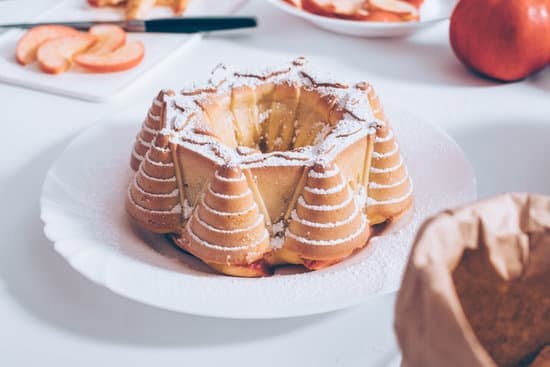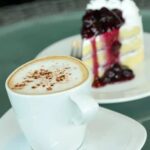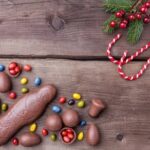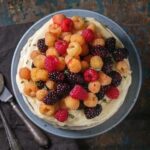The art of cake decoration is a true testament to the creativity and imagination that goes into creating unforgettable moments. Whether it’s a birthday, wedding, or special occasion, decorating a cake has the power to elevate any celebration to new heights. From intricate designs to vibrant colors and personalized touches, there are endless possibilities when it comes to adorning a cake.
In this article, we will dive into the world of cake decoration, exploring essential tools, edible decorations, fondant and gum paste techniques, buttercream piping methods, unique cake toppers, non-edible decorations, and expert tips and tricks for perfectly decorating a cake. Get ready to unleash your creativity as we embark on this delightful journey of turning a simple dessert into a masterpiece.
Decorating a cake is not simply about making it visually appealing; it is about creating an experience that lingers in the memories of those who enjoy it. Each stroke of frosting or carefully placed edible flower can convey emotions and set the tone for a joyful celebration. The artistry behind cake decoration lies in the ability to transform an ordinary baked good into something extraordinary – something that captivates not only the taste buds but also the eyes.
In this article, we will delve into various techniques and tools used in cake decoration that enable bakers to bring their creative visions to life. We will explore edible decorations such as fresh fruits and chocolate ganache that add both flavor and aesthetic value to cakes. We will also discuss the versatility of fondant and gum paste in creating intricate details like 3D figures, delicate ruffles, realistic flowers, and charming bows.
Additionally, we will unravel the secrets behind mastering buttercream piping techniques – from elegant rosettes and decorative borders to basketweave patterns and exquisite lettering. Furthermore, we will discover unique cake toppers that add a personalized touch to celebrations while showcasing alternative non-edible decorations like stencils, glitter, ribbons, and even cake jewelry.
Stay tuned as we share expert tips and tricks for achieving flawless cake decoration, from color coordination to achieving smooth surfaces and troubleshooting common challenges. Together, let’s embark on a journey that celebrates the limitless possibilities of cake decoration and encourages you to unleash your inner artist.
Essential Tools for Cake Decoration
When it comes to cake decoration, having the right tools is essential. These tools not only make the process easier but also allow for more intricate and professional-looking designs. Whether you are a beginner or an experienced decorator, here are some of the essential tools you need to have in your cake decorating kit:
One of the most basic tools you will need is a piping bag. Piping bags come in different sizes and materials, such as disposable plastic or reusable cloth. They are used to pipe frosting onto the cake in various patterns and designs. Along with a piping bag, you will also need piping tips. These tips come in different shapes and sizes and can create different effects, from delicate flowers to smooth borders.
Another important tool for cake decoration is a turntable. A turntable allows you to easily rotate the cake while decorating, ensuring even coverage of icing and precise details. This makes it much easier to achieve smooth edges and clean lines on your cake.
In addition to piping bags and a turntable, other tools that are essential for cake decoration include spatulas for spreading icing or ganache, offset spatulas for smoothing surfaces, an angled palette knife for creating sharp edges, and a bench scraper for achieving flawlessly straight sides on your cake.
Finally, don’t forget about the basics like measuring cups and spoons, as well as an oven thermometer to ensure accurate baking temperatures. Having these essential tools in your arsenal will set you up for success when it comes to decorating cakes.
Having the right tools is just the first step in creating beautifully decorated cakes. The next section will explore how edible decorations can enhance both the flavor and aesthetic appeal of your cakes.
Edible Decorations
In addition to the essential tools and techniques needed for cake decoration, using edible decorations is a fantastic way to enhance not only the visual appeal but also the flavor of your cake. Edible decorations offer endless possibilities and can elevate any cake to new levels of deliciousness and aesthetic beauty. From fresh fruits to chocolate ganache, let’s explore some popular edible decorations that will take your cake to the next level.
Using fresh fruits as cake decorations adds a burst of freshness, color, and natural sweetness to your creation. You can choose from a variety of fruits based on what complements the flavor of your cake. Berries like strawberries, blueberries, raspberries, or sliced kiwi are popular choices for their vibrant colors and taste.
Citrus fruits like oranges and lemons can add a zesty twist to your cake. Remember to wash and dry the fruits thoroughly before placing them on the cake to ensure both hygiene and longevity.
Caramel drizzles are another favorite edible decoration that adds elegance and enhances the flavor profile of a cake. Drizzling caramel sauce over a buttery sponge or a rich chocolate ganache creates an eye-catching design while offering a delightful caramelized sweetness with each bite. You can create different patterns using caramel drizzle by practicing different techniques such as spiral designs or zigzags.
| Edible Decoration | Description |
|---|---|
| Fresh Fruits | Adds freshness, color, and sweetness |
| Caramel Drizzles | Creates elegant designs with caramelized sweetness |
To add richness and decadence to your cake, consider using chocolate ganache as an edible decoration. Made by melting chocolate with cream, ganache can be poured over the cake for a glossy finish or used to pipe decorative elements like scrolls or abstract designs. The smooth and velvety texture of chocolate ganache paired with the sweetness of the cake creates a heavenly combination that is sure to impress your guests.
Lastly, incorporating edible flowers into your cake decoration not only adds a stunning visual element but also introduces unique flavors and aromas. Edible flowers like lavender, rose petals, pansies, or marigolds are carefully selected and can be used to garnish the cake or pressed between layers for added fragrance. However, it is essential to ensure that the flowers used are specifically labeled as edible and have not been treated with any harmful chemicals.
Incorporating these edible decorations can truly elevate both the taste and aesthetic appeal of your cake. Whether you choose to experiment with fresh fruits, caramel drizzles, chocolate ganache, or edible flowers, remember that the key is to strike a balance between flavors and aesthetics. With practice and creativity, you can create cakes that not only look visually stunning but also leave a lasting impression on everyone’s taste buds.
Fondant and Gum Paste
Fondant and gum paste are two essential elements in cake decoration that allow decorators to take their creations to the next level. Fondant is a smooth, pliable icing that provides a flawless finish and can be used to create intricate details, while gum paste is a firmer modeling paste that allows for more sculpting possibilities. These two mediums offer endless possibilities for creating stunning cake decorations such as 3D figures, ruffles, flowers, and bows.
Fondant is like edible dough that can be rolled out and draped over a cake or used to create various shapes and designs. It provides a clean canvas for decorators to work on, allowing them to achieve perfectly smooth surfaces and sharp edges. Fondant can also be colored using gel or powdered food coloring, giving decorators complete control over the colors of their designs.
Gum paste, on the other hand, is a firmer icing that dries quickly and becomes hard when exposed to air. This makes it perfect for sculpting intricate details such as delicate flowers, leaves, and figurines. Gum paste can be molded and shaped into different forms while maintaining its structure once it sets. It can also be tinted with gel food coloring before molding to create lifelike designs.
Both fondant and gum paste require skillful handling and practice to achieve desired results. They can be tricky to work with at first but offer endless possibilities for creative cake decorations. From elegant wedding cakes adorned with delicate fondant lacework to whimsical birthday cakes featuring gum paste characters, these mediums truly allow decorators to unleash their creativity.
Creative Buttercream Techniques
Piping is an essential skill in cake decoration that allows you to create intricate designs and add a touch of elegance to your cakes. There are various buttercream piping techniques that you can master to take your cake decoration skills to the next level.
One popular buttercream technique is rosettes. With a piping bag fitted with a star tip, you can easily create beautiful rose-like swirls on your cake. Start from the center and pipe in a circular motion, working your way outward. Experiment with different sizes and colors of rosettes to create stunning floral arrangements on your cake.
Borders are another creative buttercream technique that can instantly elevate the visual appeal of your cake. Whether it’s a simple shell border or a more intricate ruffle border, using a star tip or a petal tip will allow you to achieve clean and precise lines. Practice creating even borders along the edges of your cake or try layering different borders for added dimension.
Basketweave is a classic buttercream technique that adds texture and interest to any cake design. Using a basketweave tip, pipe vertical lines on the sides of the cake and then weave horizontal lines over them, resembling an intricate basket pattern. This technique is perfect for rustic or themed cakes and can be enhanced with edible color dust for added dimension.
Lettering is another invaluable skill in cake decoration. Whether you’re writing birthday wishes, congratulations, or personal messages, mastering lettering techniques will give your cakes a sophisticated touch. Use a round tip for thin uppercase letters or experiment with script fonts using a small round tip.
To enhance your piping skills further, consider investing in piping nozzles with different shapes and sizes. You can create various effects like leaves, shells, stars, ropes, and more with these specialized tips.
Remember to practice these techniques regularly to improve your precision and control over piping consistency. Explore different combinations of colors, shapes, and patterns to unleash your creativity and create unique designs that will wow your friends and family.
Overall, mastering the art of piping will allow you to create professional-looking cakes that are as visually appealing as they are delicious. It’s an art form that adds a personal touch to any celebration, making it truly memorable. So grab your piping bag and start practicing these techniques to take your cake decoration skills to new heights.
Unique Cake Toppers
Cake toppers are the perfect way to add a personal touch to any celebration. Whether you’re planning a birthday party, wedding, or anniversary, unique cake toppers can bring a sense of individuality and customization to your cake. From custom-made figurines that represent the couple or celebrant to monogram letters and thematic cake toppers, there are endless options to choose from.
One popular option for personalized cake toppers is custom-made figurines. These figurines can be crafted to resemble the couple or individuals being celebrated. They can be made from various materials such as clay, resin, or even edible fondant. Custom-made figurines not only add a personal touch but also become cherished keepsakes after the event.
Another creative option for cake toppers is monogram letters. Monograms are a classic way of showcasing initials or names in an elegant and stylish manner. These letters can be made from materials such as wood, acrylic, or metal and come in various sizes and fonts. Monogram cake toppers are perfect for weddings or anniversaries, where couples can display their initials with pride.
Thematic cake toppers are also becoming increasingly popular. These are designed specifically for different themes or occasions and add a fun and festive element to the cake. Thematic cake toppers can include items like mini banners with messages like “Happy Birthday” or “Congratulations,” small figures representing the theme (such as beach-themed figures for a tropical party), or symbols that match the occasion (like hearts for Valentine’s Day).
Non-Edible Decorations
While edible decorations are a popular choice for cake decorators, there are also a plethora of non-edible decorations that can transform any ordinary cake into a remarkable centerpiece. These alternative options provide endless possibilities for adding personalization and creativity to your cake designs. From cake stencils to edible glitter, ribbons, and cake jewelry, let’s explore the world of non-edible decorations.
Cake Stencils
One way to achieve intricate and professional-looking designs on your cakes is by using cake stencils. These stencils come in various patterns and shapes, allowing you to easily transfer beautiful designs onto the surface of your cake. Simply place the stencil over the cake and dust it with cocoa powder or powdered sugar for an elegant finish. Cake stencils are perfect for adding delicate artwork, creating texture, or simply adding a touch of elegance to any celebration.
Edible Glitter
If you’re looking to add some sparkle and glamour to your cake, edible glitter is a fantastic option. Edible glitter is made from food-safe materials such as gum arabic or sugar crystals and comes in a wide range of vibrant colors.
Whether you want a subtle shimmer or an all-out dazzling effect, edible glitter can be sprinkled on top of your frosting or used to highlight specific design elements. It’s an easy way to create eye-catching and festive cakes that will impress all your guests.
Ribbons and Cake Jewelry
To give your cakes a touch of sophistication and glamour, consider using ribbons or cake jewelry as decorative accents. Ribbons can be tied around the base of each tier or used as borders along the edges of the cake for an elegant look.
Additionally, there are various types of decorative elements specifically designed for cakes, such as rhinestone monogram letters or crystal cake picks, that can add a touch of luxury and individuality to your creations. These non-edible decorations are sure to make a lasting impression at any special occasion.
Tips and Tricks for Perfectly Decorating a Cake
Proper Color Coordination
One of the key factors in creating a visually pleasing cake decoration is proper color coordination. When choosing colors for your cake, it is important to consider the theme or occasion for which the cake is being made. For example, pastel colors are commonly used for baby showers or spring-themed cakes, while rich and vibrant colors are often seen in celebratory cakes like birthdays or weddings.
To achieve proper color coordination, you can use a color wheel as a helpful guide. The color wheel shows how different colors relate to each other and can help you choose complementary or analogous color schemes for your cake design. It is also important to consider the overall aesthetic of the event or celebration where the cake will be displayed to ensure that the colors harmonize with the surroundings.
Smooth Surfaces: Crumb Coating and Fondant Smoothing
Creating a smooth surface on a cake is essential for achieving professional-looking results. One technique to achieve a smooth surface is called crumb coating. Before applying your final layer of frosting or fondant, spread a thin layer of buttercream over the entire cake. This initial layer will seal in any loose crumbs and provide a smooth base for your final coating.
For cakes covered in fondant, achieving a smooth finish requires careful attention to detail. After covering the cake with fondant, gently smooth out any air bubbles by using smoothing tools such as fondant smoothers or angled spatulas. Take your time when smoothing out the fondant to avoid tearing it and ensure an even and polished appearance.
Troubleshooting Common Decoration Challenges
Decorating cakes can sometimes come with unforeseen challenges, but with these troubleshooting tips, you’ll be prepared to tackle them head-on:
- Preventing Watery Frosting: If your frosting becomes too thin and watery, try adding powdered sugar gradually until it reaches the desired consistency. Avoid overmixing, as this can also cause frosting to thin out.
- Fixing Fondant Tears: If you encounter a tear or small hole in your fondant, you can often repair it by gently pressing the torn edges together with your fingertips. Smooth out any wrinkles or creases that may appear as a result.
- Smoothing Out Buttercream Imperfections: If you notice any imperfections in your buttercream design, such as uneven rosettes or borders, use a spatula or offset spatula to carefully reshape and smooth out the affected areas.
By keeping these tips in mind and practicing patience and attention to detail, you will be well-equipped to handle any challenges that arise during the cake decoration process. With practice, you will become more confident in your abilities and be able to create stunning cakes that are sure to impress.
Conclusion
In conclusion, cake decoration is not just a way to make a cake look visually appealing; it is an art form that allows individuals to unleash their creativity and create memorable moments. Throughout this article, we have explored the essential tools needed for cake decoration, as well as various techniques and options for enhancing the taste and visual appeal of a cake.
From edible decorations like fresh fruits and caramel drizzles to fondant and gum paste creations, there are endless possibilities when it comes to decorating a cake. The use of buttercream piping techniques can elevate the visual appeal of a cake even further, while unique cake toppers add a personal touch to celebrations. Exploring non-edible decorations like cake stencils, edible glitter, and ribbons can also transform an ordinary cake into a remarkable centerpiece.
The key to perfectly decorating a cake lies in experimentation and creativity. By combining different techniques, colors, textures, and flavors, individuals can create truly unique and stunning cakes. Remember to properly coordinate colors, aim for smooth surfaces on your cakes, and utilize expert tips and tricks to troubleshoot any common decoration challenges that may arise.
So whether you are preparing for a birthday party or a wedding celebration, let your creativity run wild when it comes to decorating your cakes. With the knowledge gained from this article and the confidence to experiment with different techniques and tools, you have the power to create cakes that will leave lasting impressions on all who indulge in them. Unleash your creativity in cake decoration and explore the endless possibilities that this art form has to offer.
Frequently Asked Questions
What can I put on a cake besides frosting?
Besides frosting, there are numerous tasty options to enhance the flavor and appearance of a cake. One popular alternative is using a glaze, which can be made by combining powdered sugar with a liquid such as lemon juice or milk, resulting in a glossy finish that adds sweetness to the cake. Additionally, whipped cream can be an excellent choice for those who prefer a lighter and less sweet option.
Fresh fruits, such as berries or slices of kiwi or mango, can also be placed on top of the cake to add color and freshness. Finally, some people enjoy spreading fillings like jam, custard, or even Nutella between cake layers for added moisture and flavor.
What are the 5 kinds of cake decorating?
The five main types of cake decorating techniques include piping, fondant work, buttercream painting, ganache pouring, and edible image printing. Piping involves using a pastry bag and different nozzles to create various designs through the use of buttercream or royal icing. Fondant work entails rolling out sheets of fondant icing and shaping it into intricate designs or covering the entire cake with smooth fondant for a polished look.
Buttercream painting involves using colored buttercream to create paintings or patterns directly onto the cake’s surface. Ganache pouring refers to pouring ganache (a mixture of chocolate and cream) over a cake to achieve a glossy finish. Lastly, edible image printing allows bakers to print pictures or designs onto edible paper using food coloring ink which is then placed on top of the cake.
What is a good thing to put on a cake?
There are several delightful options when it comes to deciding what to put on top of a cake. A classic choice is fresh berries like strawberries or raspberries placed strategically around the edges or scattered across the top for a burst of color and natural sweetness. Another great option is nuts such as toasted almonds, chopped pistachios, or pecans that add crunchiness while complementing the flavors in the cake itself.
For those looking for a touch of elegance, edible flowers like pansies or violets can be placed on top of the cake as decoration. Alternatively, a dusting of powdered sugar can create a visually appealing effect without overwhelming the taste. Ultimately, the choice depends on personal preference, so feel free to experiment and let your creativity shine through.

Welcome to our cake decorating blog! My name is Destiny Flores, and I am the proud owner of a cake decorating business named Cake Karma. Our mission is to provide delicious, beautiful cakes for all occasions. We specialize in creating custom cakes that are tailored specifically to each customer’s individual needs and tastes.





